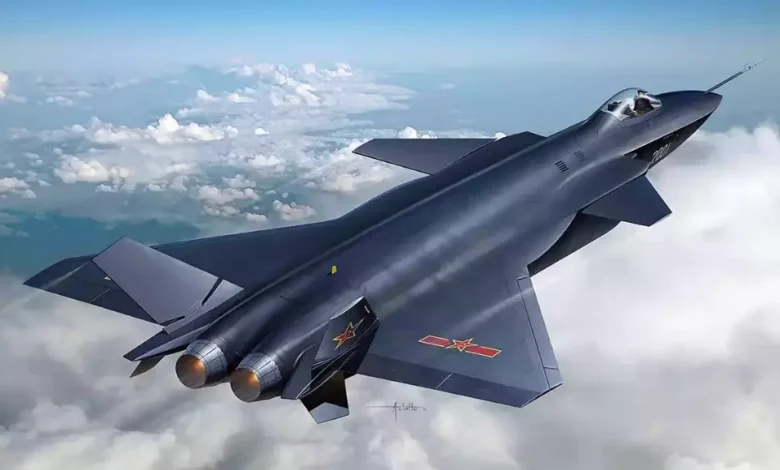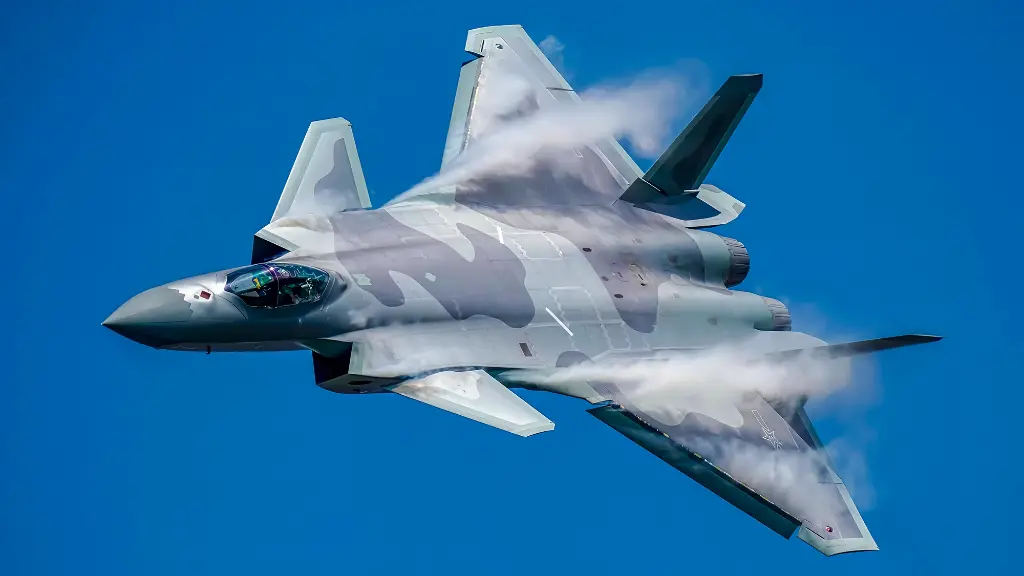Chengdu J-20

The Chengdu J-20, also known as “Mighty Dragon,” is a fifth-generation stealth fighter developed by Chengdu Aerospace Corporation for the People’s Liberation Army Air Force (PLAAF). First flown in 2011 and introduced in 2017, the J-20 is designed for air superiority and strike missions. It is China’s first stealth fighter and represents a significant leap in the country’s military aviation capabilities.
Fact Sheet
| Role | Stealth air superiority and strike fighter |
|---|---|
| Manufacturer | Chengdu Aerospace Corporation |
| First Flight | 2011 |
| Service Entry | 2017 |
| Crew | 1 |
Specifications
| Length | 20.4 m (66.9 ft) |
|---|---|
| Wingspan | 13.5 m (44.3 ft) |
| Height | 4.45 m (14.6 ft) |
| Empty Weight | ~19,000 kg (41,888 lb) |
| Max Takeoff Weight | ~37,000 kg (81,571 lb) |
| Powerplant | 2 × WS-10C or WS-15 turbofans |
| Thrust | ~30,000 lbf (130 kN) per engine |
| Max Speed | Mach 2.0 (2,470 km/h; 1,535 mph) |
| Service Ceiling | 20,000 m (65,600 ft) |
| Range | ~2,000 mi (3,200 km) combat radius |
| Rate of Climb | ~60,000 ft/min (305 m/s) |
Avionics & Armament
| Main Radar | Active Electronically Scanned Array (AESA) radar |
|---|---|
| Avionics | Advanced avionics suite, electronic warfare systems |
| Armament | Internal bays for: – 4 air-to-air missiles (PL-15, PL-10) – Precision-guided bombs External hardpoints for: – Additional missiles, bombs, or fuel tanks (non-stealth configuration) |
Notable Features
- Stealth design for reduced radar cross-section.
- Advanced avionics for superior situational awareness.
- Long-range capability for extended missions.
- High maneuverability with thrust vectoring engines (planned).
- Represents a significant leap in China’s military aviation technology.

The Chengdu J-20 “Mighty Dragon” is China’s premier fifth-generation stealth fighter, developed by the Chengdu Aerospace Corporation for the People’s Liberation Army Air Force (PLAAF). It represents a significant leap in Chinese aerospace capability, rivaling the American F-22 and F-35 in design philosophy and technology.
Key Features and Specifications:
- Role: Multirole stealth fighter—air superiority, interception, long-range strike, and emerging roles in electronic warfare and drone command.
- Crew: Primarily single-seat; a twin-seat variant, the J-20S, has also been developed for expanded mission sets including electronic warfare and control of unmanned “loyal wingman” drones.
- Dimensions: Length approx. 20.4–21.2 m, wingspan 13.0–13.5 m, height 4.45–4.69 m.
- Weight: Maximum takeoff weight around 37,000 kg.
- Engines: Early J-20s used Russian AL-31FM2 engines, then indigenously produced WS-10C turbofans; the advanced WS-15 engine is under development, expected to provide supercruise capability and improved overall performance.
Performance:
- Top Speed: Mach 2.0+ (about 2,470 km/h).
- Combat Range: 2,000 km; maximum range up to 6,000 km with external fuel tanks.
- Service Ceiling: Up to 20,000 meters (66,000 ft).
Stealth and Avionics:
- Stealth Features: Radar-absorbing materials, stealth-optimized shaping with chines and canards, diverterless supersonic inlets, and internal weapons bays help minimize radar cross-section.
- Avionics: Advanced AESA radar (such as Type 1475/KLJ-5), electro-optical/infra-red targeting systems, and a sophisticated communications/data-link suite.
- Cockpit: Glass cockpit with a large digital display, designed to reduce pilot workload and boost situational awareness.
Armament:
- Internal bays for air-to-air missiles (notably the PL-10 for short-range, PL-15 for long-range), and precision-guided munitions. The primary bay can accommodate up to four medium/long-range missiles; two side bays each hold a short-range missile like the PL-10.
- External hardpoints: Four, used when stealth is not critical, enabling a higher payload at the expense of increased radar signature.
- Potential Payload: Emerging info suggests new variants could carry up to 14–16 missiles if stealth is traded for payload.
Operational and Strategic Context:
- The J-20’s primary missions include counter-air operations (to challenge U.S. and allied air dominance), deep strike, interception, and as of latest upgrades, possible command and control of autonomous drones or electronic warfare.
- The development and fielding of a twin-seat variant (J-20S) is a world first for operational stealth fighters, expanding flexibility for complex missions such as drone command, enhanced electronic warfare, and potentially targeting or reconnaissance tasks.
- Real-world exercises reportedly indicate the J-20’s ability to approach adversaries undetected or with delayed detection, highlighting its tactical impact.
Comparison within Fifth-Gen Fighters:
- Like the F-22 and F-35, the J-20 integrates stealth, advanced avionics, high maneuverability, and advanced sensors.
- Distinctive for its canard-delta layout (forward canard surfaces paired with a large blended delta wing), which increases lift and maneuverability, and a frameless canopy for improved pilot visibility.
The J-20 has been operationally deployed since 2017, with numbers and variants expanding as China modernizes its air combat capabilities. It is expected to play a central role in China’s airpower strategy into the 2030s and beyond.



